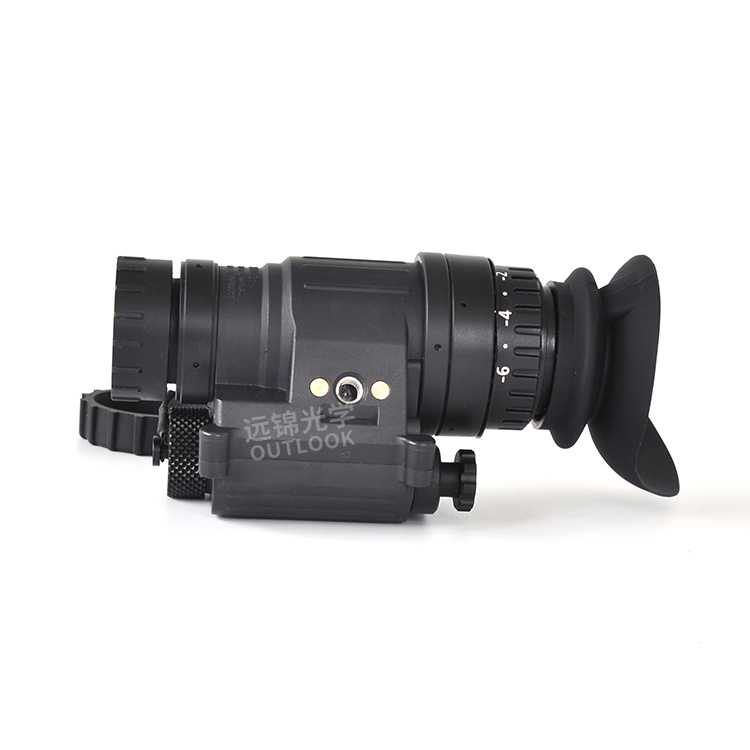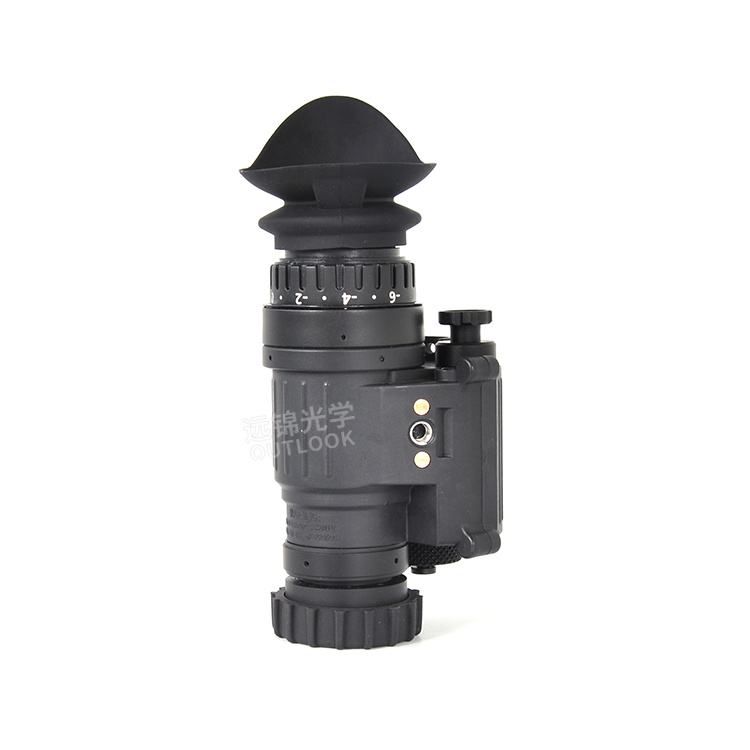Core Definition
A monocular night vision device, as the name suggests, is a single-eye (using only one eye) night vision device. It is the most common and basic form of night vision device, typically resembling a short telescope or a large SLR camera lens.
Its core function is to amplify and convert faint light from the environment (such as starlight or moonlight) or infrared light invisible to the human eye, thereby generating a bright image visible to the human eye in the darkest night.
Advantages of Night Vision Monoculars
Portabilit and Lightweight
Small Size and Light Weight: Compared to night vision binocular-style night vision devices, night vision monoculars are very compact and easily fit in a pocket or tactical vest pocket, making them less tiring to carry or use for extended perios.
Cost-Effectieness
Relatively Affordable: For devices of the same technology generation (e.g., Gen 2+, Gen 3), monocular night vision devices are typically much cheaper than night vision binocular or binocular devices. This offers one of the lowest-cost ways to enter the world of night vision.
Versatility
Flexible Usage: night vision monoculars can be handheld for short-term observation or easily mounted on a helmet, weapon (with an infrared laser designator), or camera tripod for hands-free or stable viewing.
Usable as a night vision monocular: In military and law enforcement settings, monocular night vision devices are often used in conjunction with helmet-mounted and weapon-mounted laser designators to enable concealed movement and aiming.
Preserving Dark Adaptation in One Eye
This is a unique tactical advantage of monocular night vision devices. When using a monocular night vision device, the other eye remains unobserved. When observing bright light sources (such as muzzle flashes, explosions, or sudden lighting), you can quickly close the eye on the night vision device and continue observing with the dark-adapted eye, avoiding "white blindness" and complete loss of vision due to bright light.
Easy and Rapid Deployment
Going from carrying to viewing is extremely fast, faster than adjusting night vision binoculars.
Disadvantages of Monocular Night Vision Devices
Poor Viewing Comfort and Immersion
Night Vision Monocular Vision: The biggest disadvantage is that you can only see with one eye. The brain cannot fuse the images from both eyes, resulting in a lack of three-dimensional perception and depth perception. Prolonged viewing can easily lead to eye fatigue, headaches, and even nausea. It lacks the natural immersive feeling of "seeing the world through a window" that binoculars provide.
The field of view (FOV) is typically narrow.
Although the field of view depends on the design of the objective lens and image intensifier tube, the field of view of most monocular devices (typically around 40°) can feel narrower than that of binoculars, giving the impression of "looking through a straw," limiting situational awareness.
Lack of depth perception
Because only one eye provides the image, the brain struggles to accurately judge the distance and depth of objects. This is particularly disadvantageous in scenarios requiring precise distance judgment, such as maneuvering in complex terrain, jumping, or driving.
Handheld night vision devices can be tiring.
Although lightweight, holding the device steady for extended periods can cause arm fatigue, and the image can become unstable due to even the slightest hand movement.
Unsuitable for extended missions.
Combined with the fatigue associated with monocular vision and the potential physical discomfort, night vision monoculars are not suitable for core missions requiring continuous night vision use for hours, such as long-distance night patrols and driving. Night vision monoculars are ideal for the following users and scenarios:
Entry-level enthusiasts or users on a limited budget: Those who want to experience night vision technology but don't want to invest heavily.
Backup or emergency equipment: Use binoculars as a backup or in a survival kit or vehicle emergency bag.
Short-term tactical missions: Military/law enforcement personnel perform short-term static observations, inspect equipment, or aim weapons.
Specific applications: These include nighttime wildlife observation (brief recording), and inspecting structures or electrical circuits.
Choose a Night Vision Monocular if:
You have a strictly limited budget and are a first-time user.
You need ultimate portability that can easily fit into a pocket or the side pocket of a backpack.
You are looking for short, intermittent observations (such as detecting unusual noises or occasionally checking the trail while hiking at night).
You need a backup device or a weapon-mounted mount. Typical Users: Night camping enthusiasts, budget-conscious preppers, and law enforcement personnel who rely on backup equipment.
In summary, monocular night vision devices are the entry-level and primary equipment for entering the world of night vision. They strike a good balance between performance, portability, and price. Whether you are an outdoor enthusiast, hunter, or someone with professional needs for nighttime observation, a monocular night vision device is a very practical and reliable choice. If you're looking for extended, highly immersive nighttime activities (such as hunting or patrolling), binoculars are a better choice. However, if you're on a budget or simply need a lightweight, versatile tool for short observations, a night vision monocular is a very practical option.




